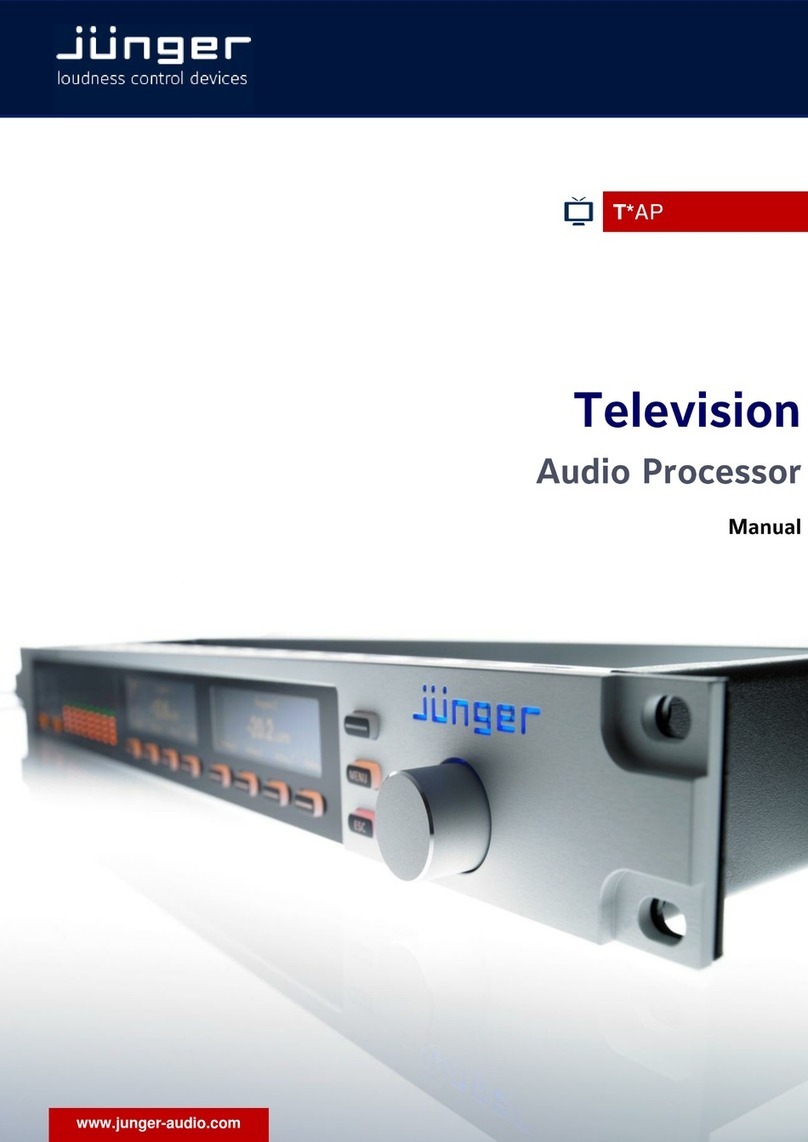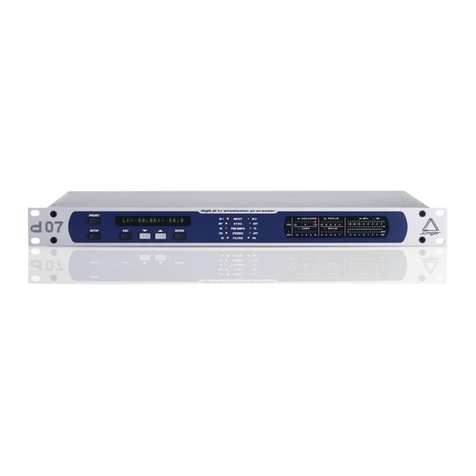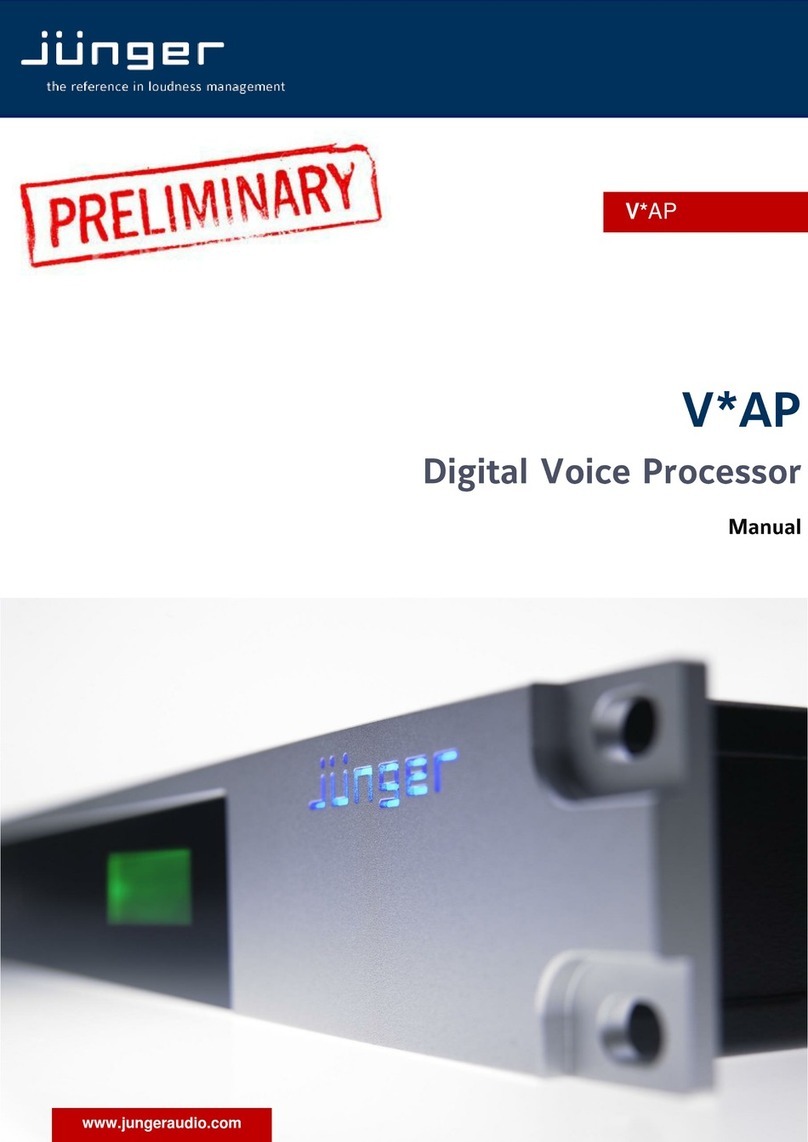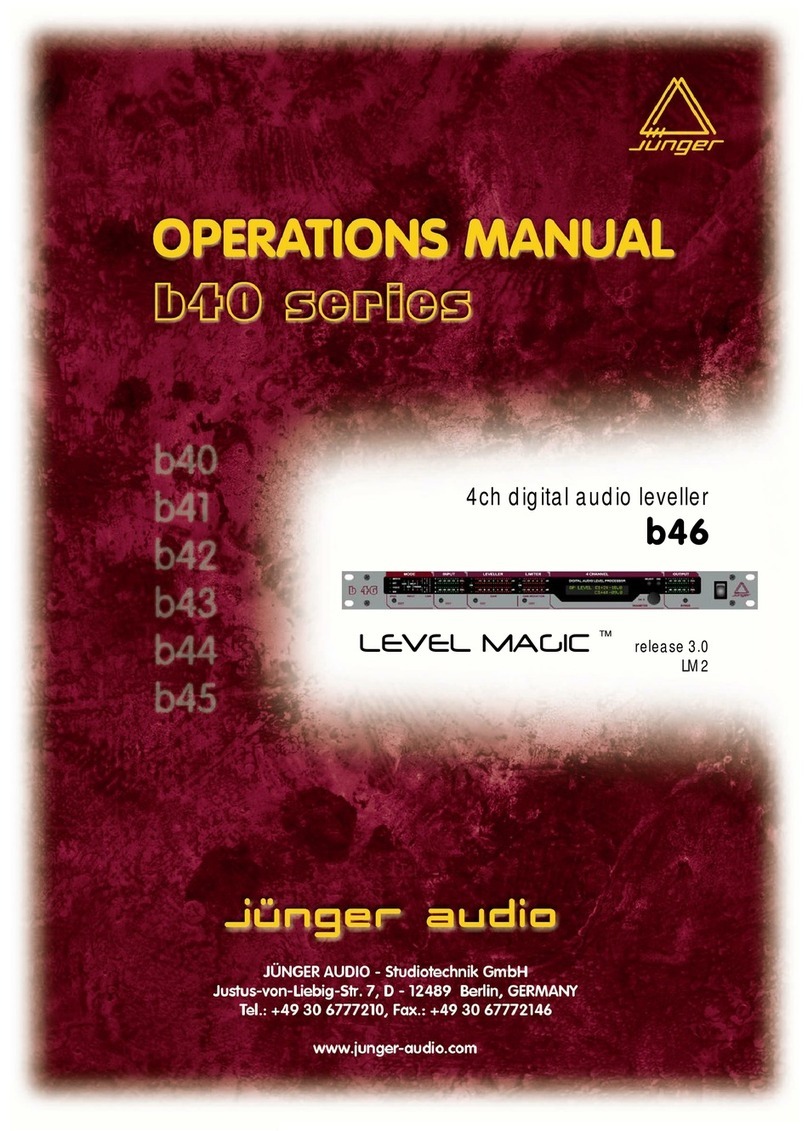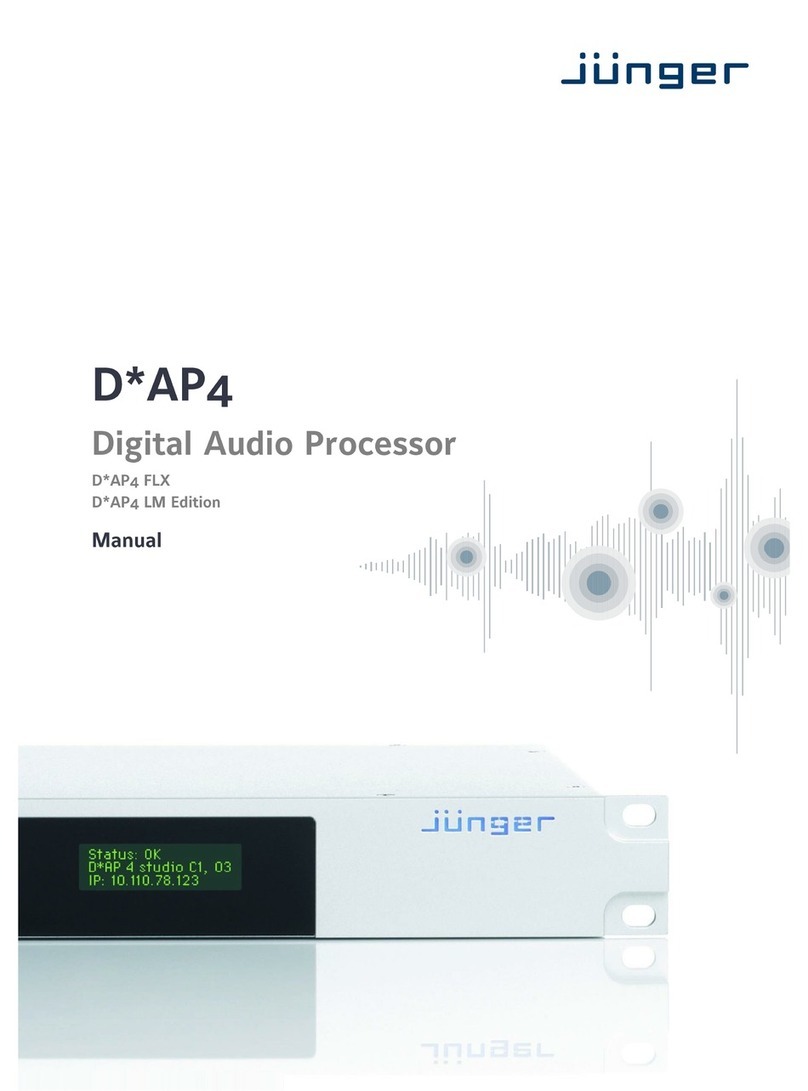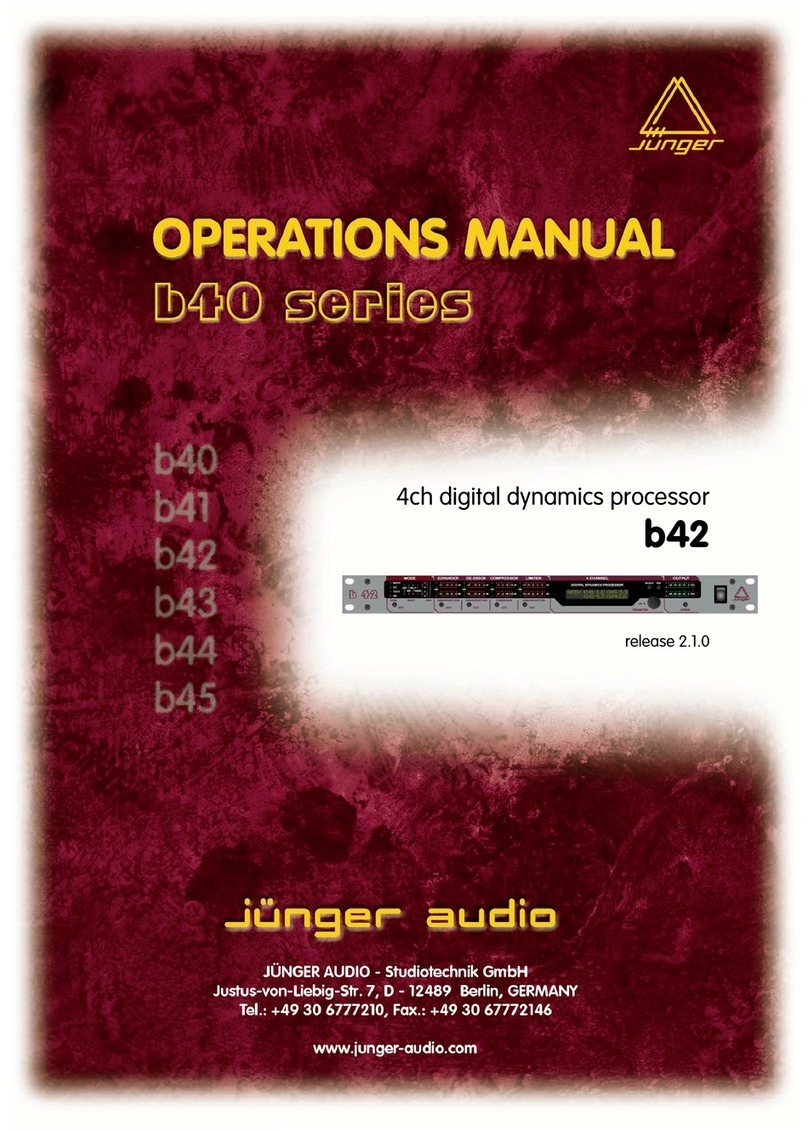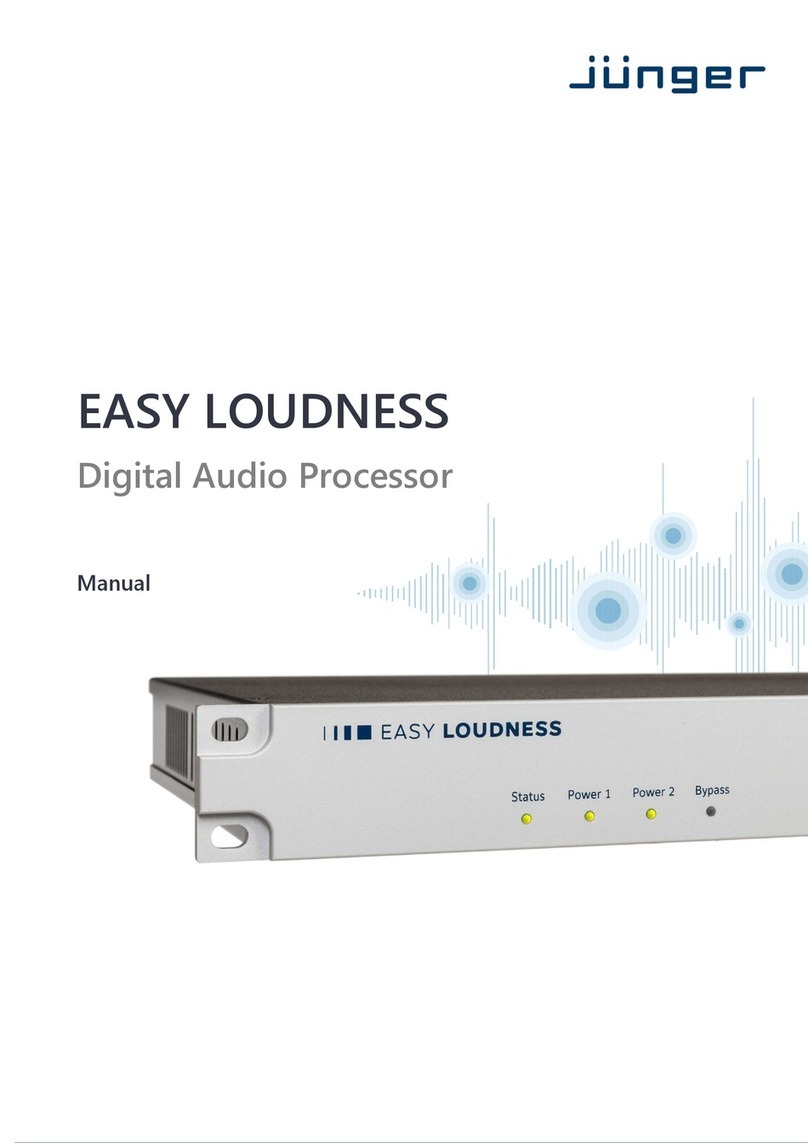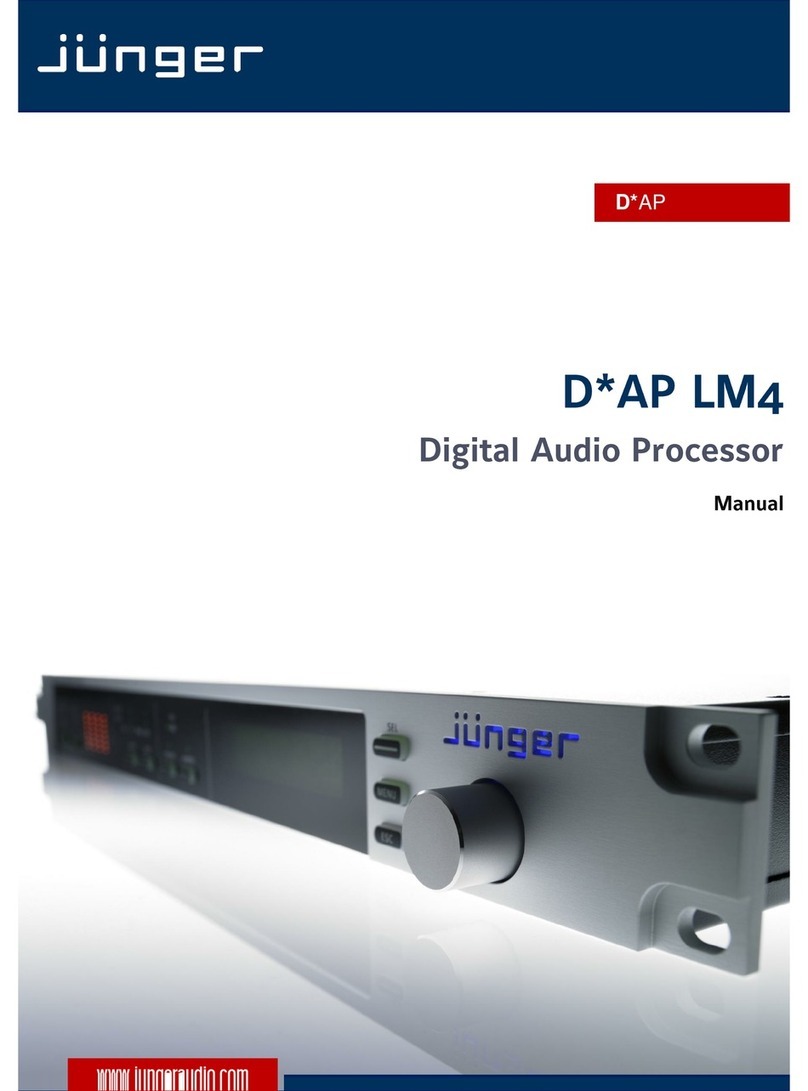2. FUNCTION DESCRIPTION
FUNCTION DESCRIPTION 2
BASIC DESCRIPTION 2.1
The digital dynamics processors by Jünger
Audio are high quality devices for adjusting the
dynamic range of digital audio signals in
mastering or studio applications.
All units are easy to use. The operation requires
only a limited number of manual settings to be
made by the user to achieve optimum results.
All other parameters required for inaudible
processing of the dynamic range are
automatically controlled by the program signal
and are constantly optimized.
The dynamic range processor principles
developed by Jünger Audio enable
compressors, limiters and expanders to be
produced with exceptionally high audio quality,
without coloration, pumping, breathing,
distortion or modulation effects sometimes
associated with this type of processor. In short,
almost inaudible pro-cessing - with ease of
use. All Jünger Audio dynamics processors
work according to a multi-loop principle,
operating in conjunction with multiple frequency
linear control circuits. The resulting attack and
release times of the system are variable and
are adapted to the characteristics of the input
signal. This allows relatively long attack times
during steady-state signal conditions but also
very short attack times when impulsive input
transients are present.
The premium series ACCENT digital dynamics
processors are dynamic range processors
which, contrary to their conventional
counterparts, are effective for a wide dynamic
range of input signals (50dB). The
compression of the program signal takes place
evenly over the entire dynamic range, not only
at the top end above a certain threshold level.
The dynamic structure of the input signal (e.g.
dynamic musical changes) are converted
proportionally so that even after compression
the ratios are maintained, only slightly
condensed, providing a transparent, seemingly
uncompressed result.
features
• 2-channel digital dynamic range processor
• accepts input sample rate from 44.1 up to
96kHz
• analog input and output with sophisticated
A/D- converter and D/A-converter working up
to 96kHz and 24bit
• high speed or 2-wire 96kHz interfaces
• configurable audio chain
• insert for digital or analog audio signals
• static or dynamic filter for signal path or in side
chain
stat/dyn, peak/shelv;
FRQ 20Hz...20kHz; Q 0.5...8.0; RNG -15...15dB
• adjustable gain (channel independent) -
15...+15dB
• 2-channel independent or stereo link mode
• adaptive controlled dynamic range processing
expander
on/off, THRS -70...-20dBFS, RANGE -20...0dB,
REL 0,2...4s
compressor
on/off, RATIO 1,0:1...4,0:1, RANGE 0...15dB,
Process 0...9
distortionfree look ahead limiter
on/off, THRS 0...-20dBFS, Process 0...9
• output dither 16 or 20bit
• sample rate conversion 96kHz...44.1kHz
• multiview level display
• optional output remote fader
• user friendly preset and recall function (99
presets)
• RS-232 interface for serial remote control
• GPI interface and tally output for parallel remote
control
operation manual accent2, chapter 2 -Function description- page 2-1
